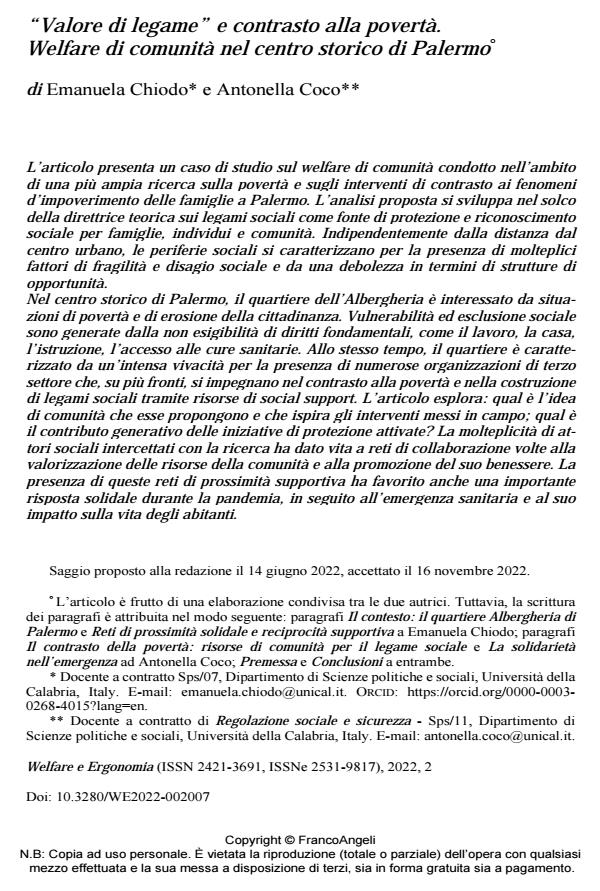Value of social bond against poverty. Community welfare in the historic center of Palermo
Journal title WELFARE E ERGONOMIA
Author/s Emanuela Chiodo, Antonella Coco
Publishing Year 2023 Issue 2022/2
Language Italian Pages 14 P. 89-102 File size 322 KB
DOI 10.3280/WE2022-002007
DOI is like a bar code for intellectual property: to have more infomation
click here
Below, you can see the article first page
If you want to buy this article in PDF format, you can do it, following the instructions to buy download credits

FrancoAngeli is member of Publishers International Linking Association, Inc (PILA), a not-for-profit association which run the CrossRef service enabling links to and from online scholarly content.
The article presents a case study on community welfare carried out within a broader research program on poverty and interventions contrasting impoverish-ment of families in Palermo. The analysis is based on the theoretical framework of social bonds as a source of social protection and recognition for families, indi-viduals and communities. Regardless of the distance from the urban center, the social peripheries are characterized by the presence of multiple factors of fragili-ty and social distress and by a weakness in terms of structures of opportunity. In the historic center of Palermo, the neighborhood of Albergheria is interested by condition of poverty and erosion of citizenship. Vulnerability and social ex-clusion are generated by the non-enforceability of fundamental rights, such as work, housing, education, access to health care. At the same time, the neighbor-hood is characterized by an intense liveliness due to the presence of numerous Third sector organizations which, on several fronts, are engaged in contrasting poverty and building social bonds through social support resources. The research question concern: what is the idea of community that they propose and that in-spires their interventions? What is the generative contribution of the activated protection interventions? The multiplicity of social actors has given rise to col-laboration networks aimed at enhancing community’s resources and at promoting its well-being. The presence of these supportive proximity networks has also fa-vored an important solidarity response during the pandemic, regarding the health emergency and its impact on the lives of the inhabitants.
Keywords: Social bonds; Urban poverty; Third sector; Community welfare; South Italy.
Emanuela Chiodo, Antonella Coco, "Valore di legame" e contrasto alla povertà. Welfare di comunità nel centro storico di Palermo in "WELFARE E ERGONOMIA" 2/2022, pp 89-102, DOI: 10.3280/WE2022-002007